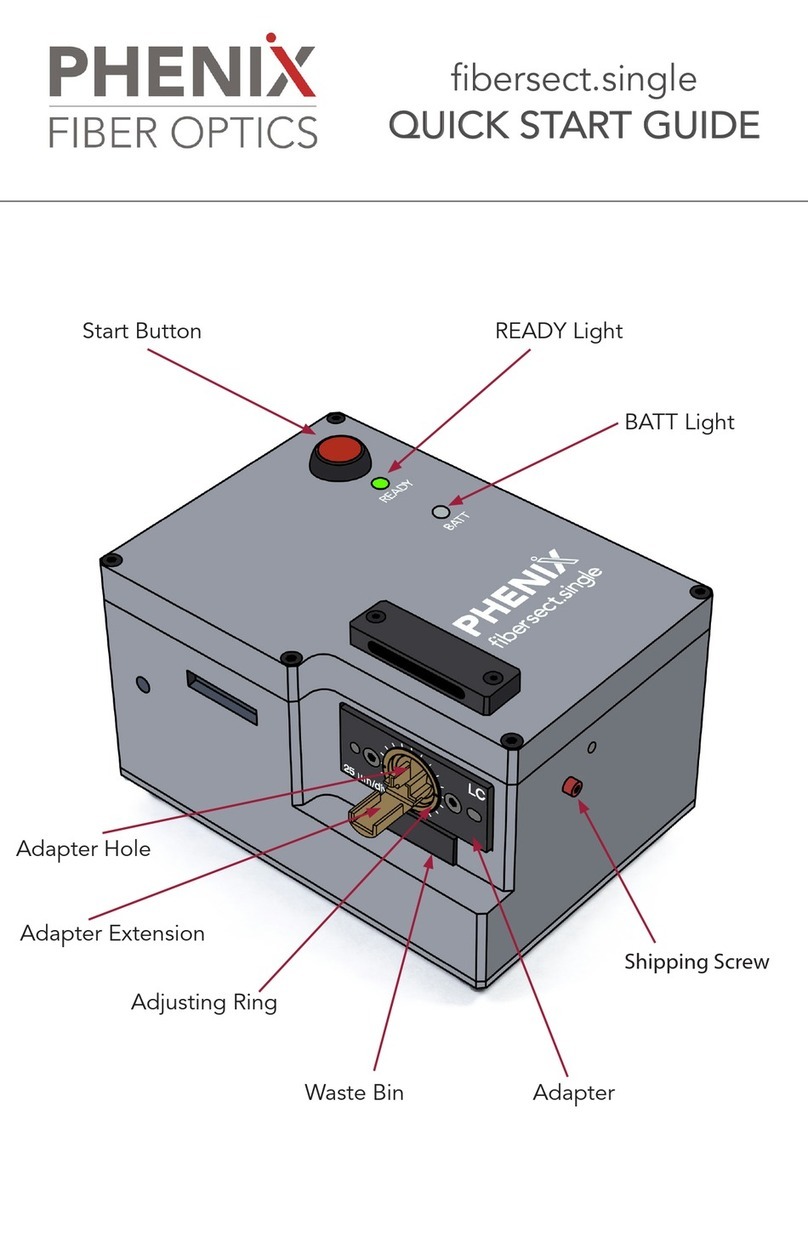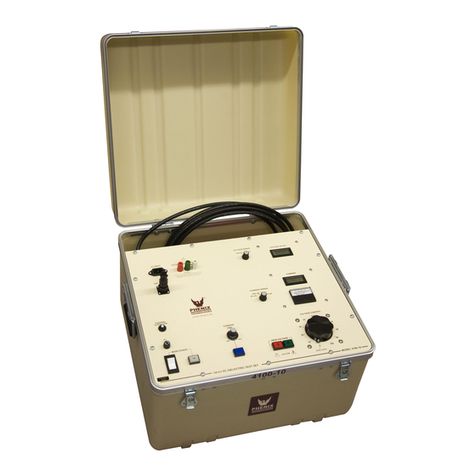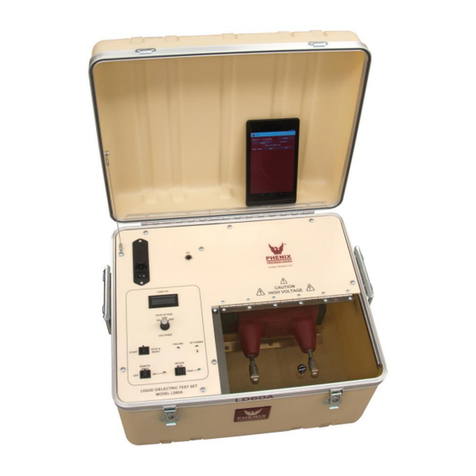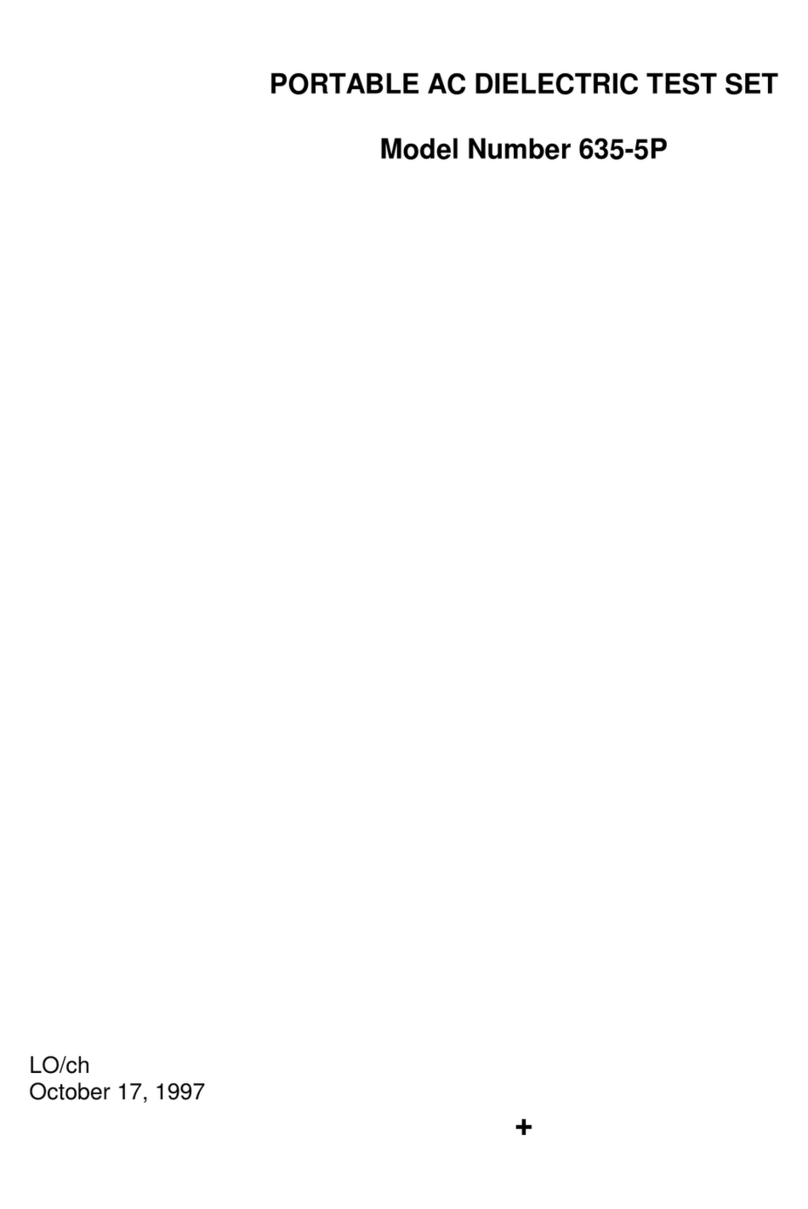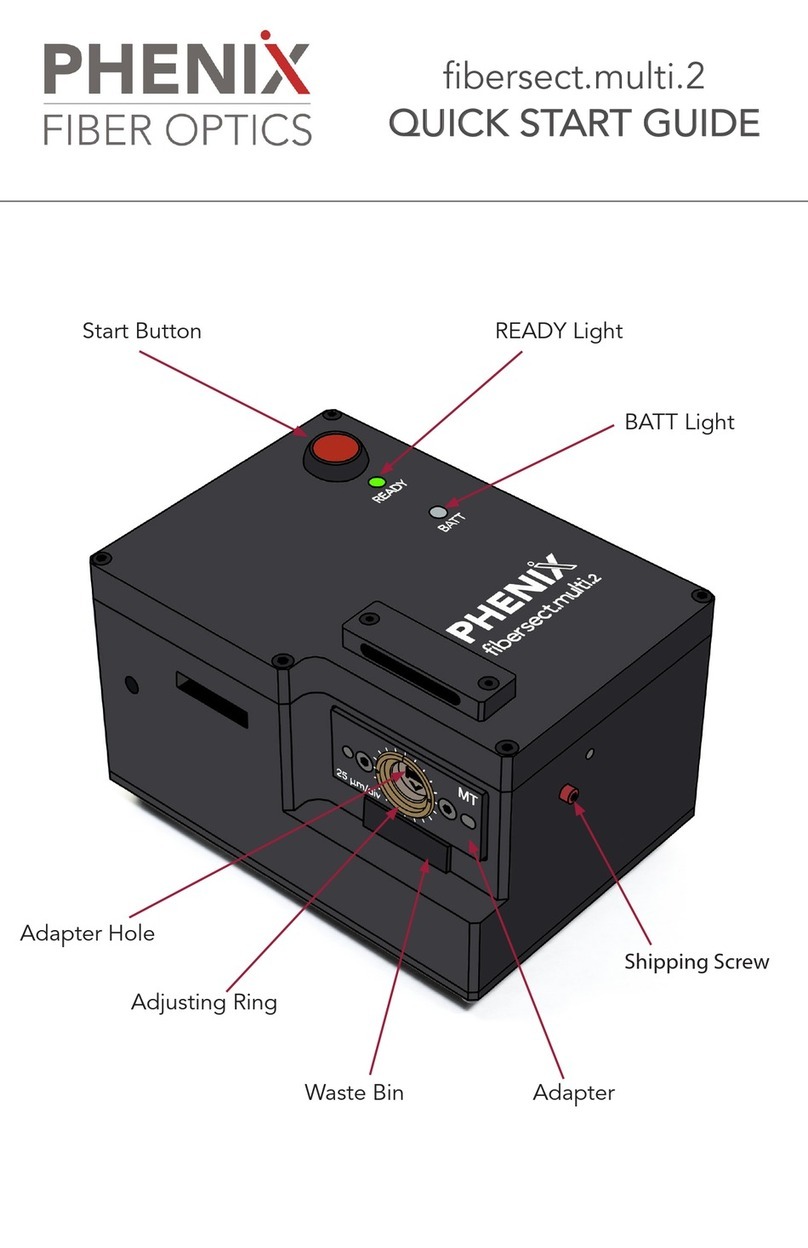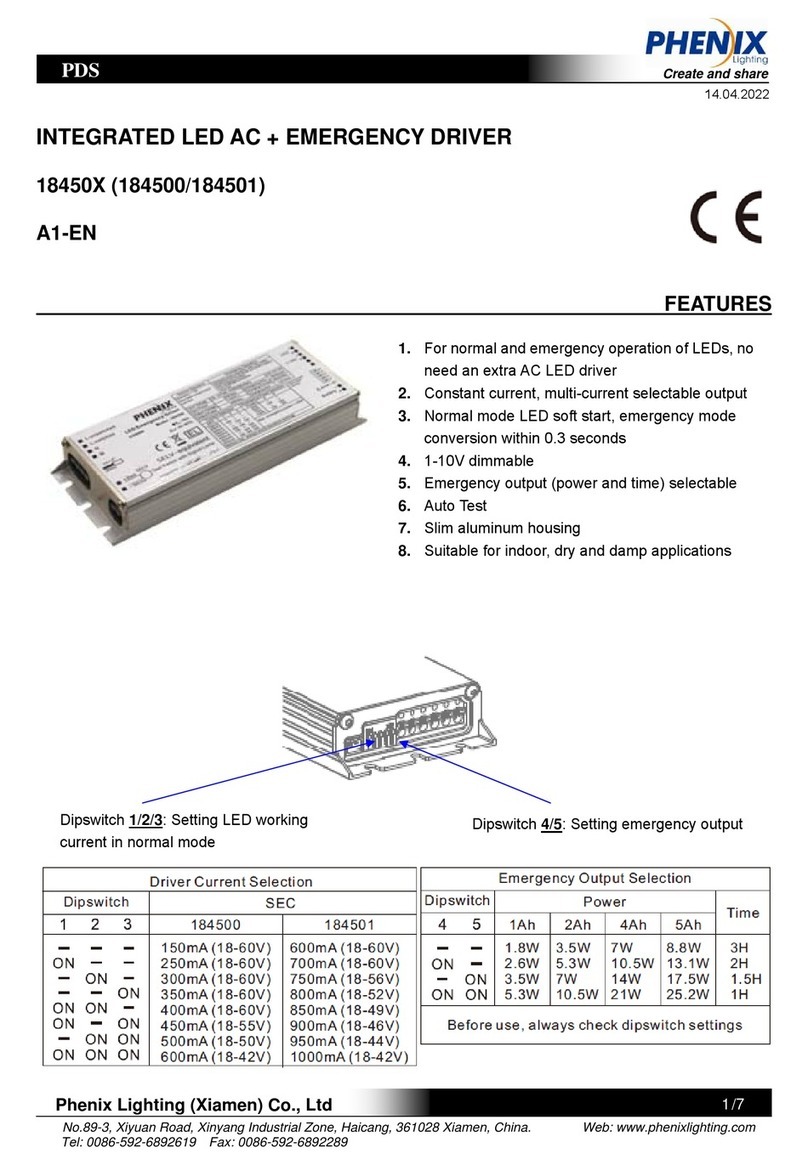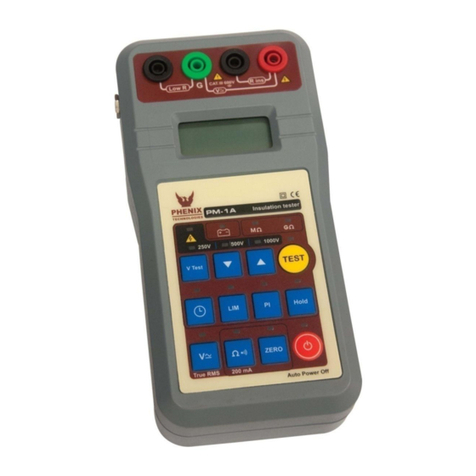
2-2
CONTROLS AND CONNECTIONS
FRONT PANEL CONTROLS AND METERS (continued)
Guard: The guard function is selected bya binding post jumper. When the jumper is connected
to Return”, leakage current or insulation resistance values associated with the Ground”
terminal will be measured. When the jumper is connected to Guard”, leakage current or
insulation resistance associated with the Ground”terminal will not be measured. (See
connection diagramat end ofthis section.)
Voltmeter Range:
This two position rotaryswitch scales the DC kilovolt meter. When the switch is rotated to
3”, the kilovolt meter range is 0-3 kV and the lower blackscale is read in order to deter-
mine output voltage. When the switch is rotated to 6”, the kilovolt meter range is 0-6 kV
and the upper red scale is read in order to determine output voltage.
Current Trip:
This control, located belowthe currentmeter range select switch, allows the operator to
set the level ofleakage current measured bythe instrument before high voltage shutdown
occurs. At its highest level (full clockwise) approximately110% offull scale current will be
allowed. At its lowest level (full counterclockwise) approximately10% offull scale current
will be allowed before shutdown.
INPUT/OUTPUT CONNECTIONS
Return:
Leakage current or insulation resistance values associated with this terminal is measured
bythe DC Microammeter”.
Guard: Leakage current or insulation resistance values associated with this terminal is always
bypassed around the DC Microammeter”.
Ground:
Leakage current or insulation resistance values associated with this binding post terminal
maybe either measured bythe DC Microammeter”or bypassed around the DC
Microammeter”depending on the position ofthe binding post jumper.
NOTE: The ground binding post jumper must always be connected to Ground and Guard
(Guard Mode) or Ground and Return (Grounded Return Mode). DO NOToperate without
jumper properlyinstalled.
Also, ifthe lowpotential side ofthe test specimen connected to Return can not or will not
be isolated fromground, the Ground post jumper must be connected to Return. Guard
mode can not be used under these circumstances or the current meter will not function
properly. (See the connection diagramon the following page.)
